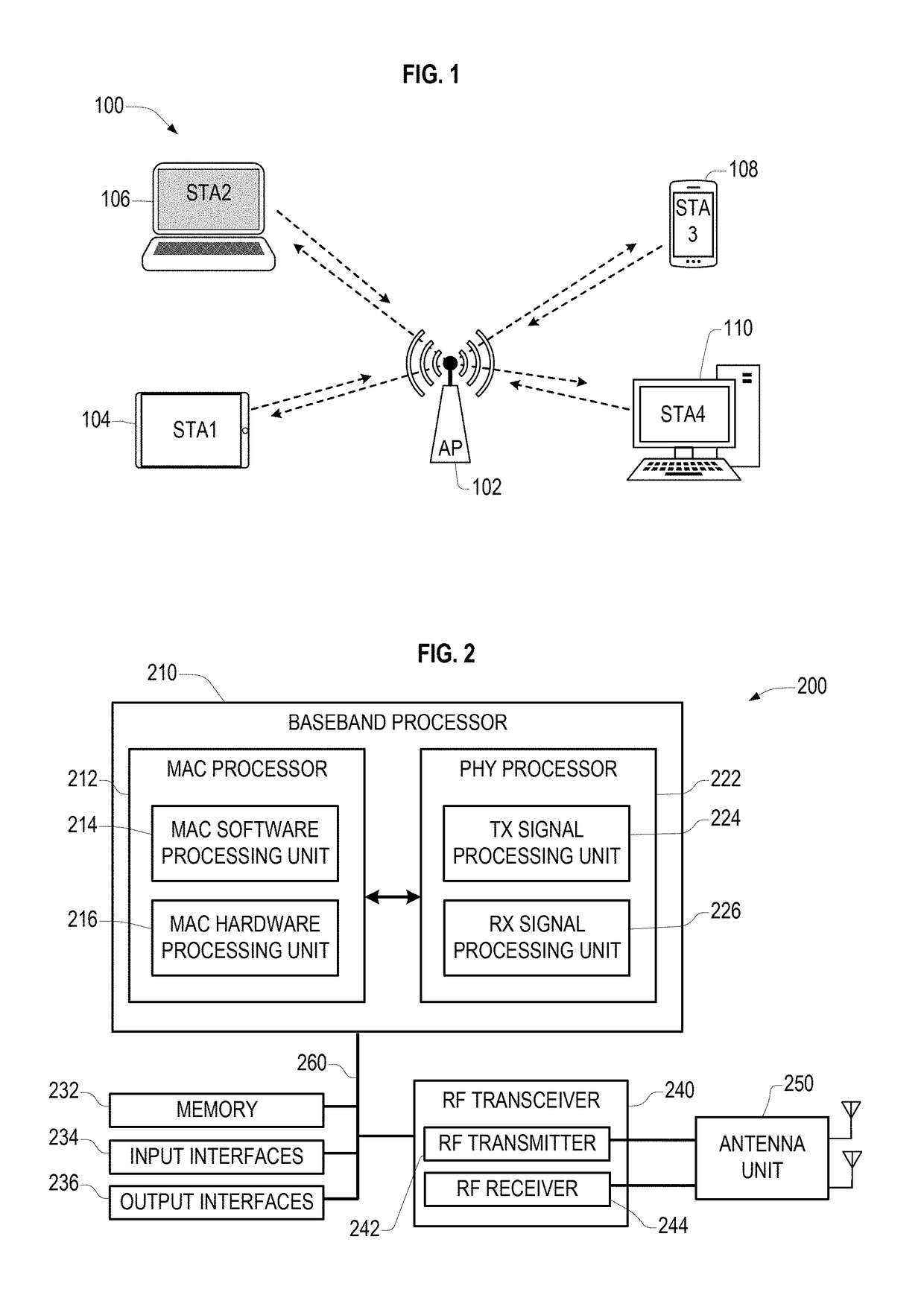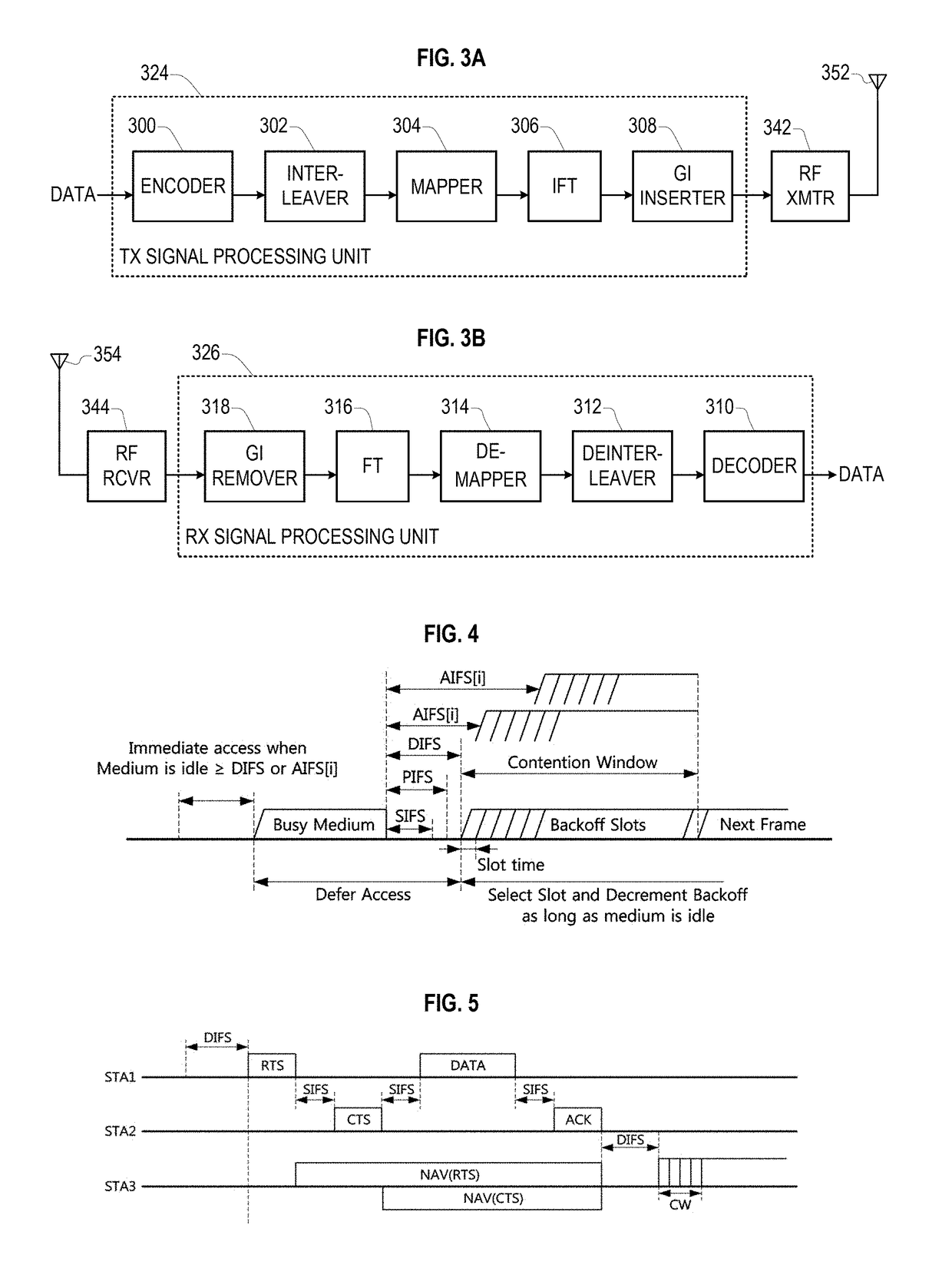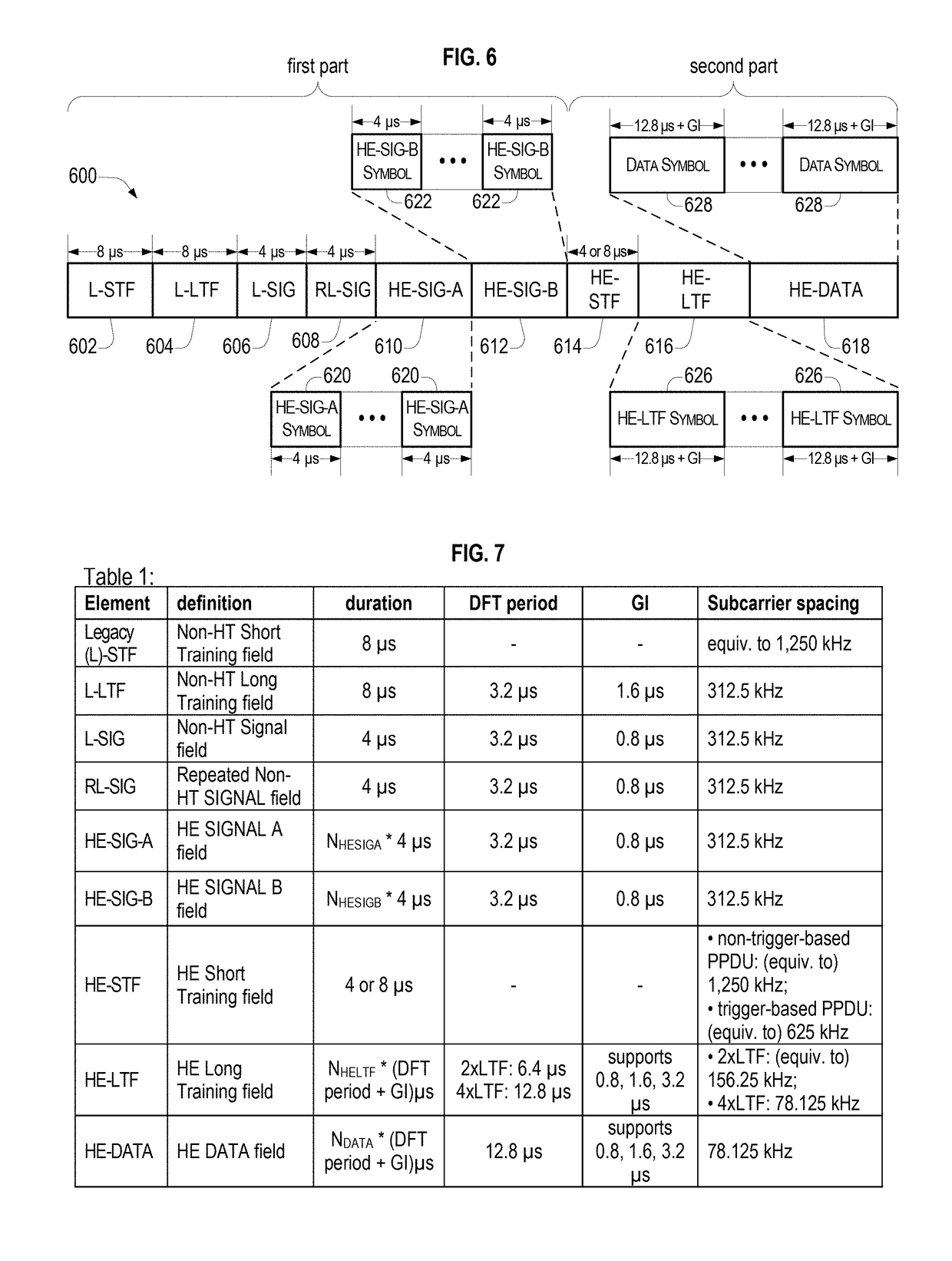Bandwidth allocation signalling
a signalling and bandwidth technology, applied in the direction of signal allocation, digital transmission, transmission path sub-channel allocation, etc., can solve the problems of reducing the performance of the wlan and increasing the overhead in the frame, and achieve the effect of high efficiency
- Summary
- Abstract
- Description
- Claims
- Application Information
AI Technical Summary
Benefits of technology
Problems solved by technology
Method used
Image
Examples
first embodiment
[0348]In the first embodiment shown in FIG. 18, three-bit code words of format ‘0bb’, where ‘0’ is the prefix and ‘bb’ is one of 00, 01, 10, and 11, are used to encode four most practically-used RU allocation cases. Five-bit code words of format ‘10ccc’, where ‘10’ is the prefix and ‘ccc’ is one of 000, 001, 010 . . . 110, and 111, are used to encode the eight next more practically-used RU allocation cases. Six-bit code words of format ‘11dddd’, where ‘11’ is the prefix and ‘dddd’ is one of 0000, 0001, 0010 . . . 1110, and 1111, are used to encode 14 least practically-used RU allocation cases.
[0349]FIG. 18 shows the coding for one side of the 20 MHZ bandwidth according to the first illustrative embodiment, wherein the following practically-used encoding are given to the respective bandwidth allocation cases:[0350]Designate allocation cases 224, 422, 44, 8 as the four most practically-used RU allocation cases and encode using pattern 0bb as 000, 001, 010, and 011, respectively.[0351]...
second embodiment
[0354]In the second embodiment shown in FIG. 19, four-bit code words of format ‘0bbb’, where ‘bbb’ is one of 000, 001, 010, 011, 100, 101, 110, and 111, are used to encode eight most practically-used RU allocation cases. Five-bit code words of format ‘10ccc’, where ‘ccc’ is one of 000, 001, 010, 011, 100, 101, 110, and 111, are used to encode the eight next more practically-used RU allocation cases. Six-bit code words of format ‘11dddd’, where ddd′ is one of 0000, 0001, 0010 . . . 1110, and 1111, are used to encode 10 least practically-used RU allocation cases.
[0355]Accordingly, in an embodiment using the codings of FIG. 19 to encode the illustrative bandwidth allocation 1300 shown in FIG. 13, the resulting bit string would be 10 bits long and have a value of 1010010101. In the bit string, the first bit (1) indicates that the middle 2 MHz is allocated, the next four bits (0100) indicate that the all 8 MHz of the left side are allocated to a station. The last 5 bits (10101) indicate ...
third embodiment
[0356]In the third embodiment shown in FIG. 20, four-bit code words of format ‘0bbb’, where ‘bbb’ is one of 000, 001, 010, 011, 100, 101, 110, and 111, are used to encode eight most practically-used RU allocation cases. Six-bit prefix code words of format ‘1eeeee’, where ‘eeeee’ is one of 00000, 00001, 00010 . . . 11110, and 11111, are used to encode 18 least practically-used RU allocation cases.
[0357]Accordingly, in an embodiment using the codings of FIG. 20 to encode the illustrative bandwidth allocation 1300 shown in FIG. 13, the resulting bit string would be 11 bits long and have a value of 10100100001. In the bit string, the first bit (1) indicates that the middle 2 MHz is allocated and the next four bits (0100) indicate that the all 8 MHz of the left side are allocated to a station. The last 6 bits (100001) indicate that a left-most 2 MHz bandwidth of the right side is allocated to a station, a right-most 4 MHz bandwidth of the right side is allocated to a station, and a remai...
PUM
 Login to View More
Login to View More Abstract
Description
Claims
Application Information
 Login to View More
Login to View More - R&D
- Intellectual Property
- Life Sciences
- Materials
- Tech Scout
- Unparalleled Data Quality
- Higher Quality Content
- 60% Fewer Hallucinations
Browse by: Latest US Patents, China's latest patents, Technical Efficacy Thesaurus, Application Domain, Technology Topic, Popular Technical Reports.
© 2025 PatSnap. All rights reserved.Legal|Privacy policy|Modern Slavery Act Transparency Statement|Sitemap|About US| Contact US: help@patsnap.com



